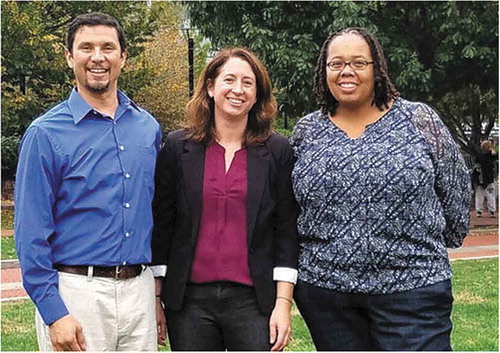As we turn the corner into this New Year, we would like to proudly remind our readers that Middle School Journal is entering its 50th volume year. This is an amazing accomplishment. MSJ has offered a critical voice for educators over the years through its sharing of research and practices related to middle grades philosophy and education, young adolescent development, and, more recently, equity and culturally responsiveness. Perhaps MSJ’s most elemental yet empowering cornerstone throughout the past 50 years has been its focus on the middle grades student. Thus, as part of this 50th volume year, we are excited to announce a new regularly included student column for Middle School Journal. It will highlight the voices and perspectives of young adolescents, including those whose voices, identities, or backgrounds have not always fit into mainstream culture. Their voices speak loudest and strongest for middle level education, for themselves and their identity(ies), and for equitable and culturally responsive practices. In this column, you will see young adolescents responding in written or artistic formats to prompts asking them to consider the connection between their identities and their schooling experiences.
More prominently featuring the voices of young adolescents is one way that this first issue of the 50th volume brings a renewed vision for hope. For who better to guide us in creating the most responsive schools that we can for young adolescents than the voices and perspectives of students themselves. Hope is a powerful, sustaining force that allows us to retool and refresh our focus onto things that really matter. Hope can also lead to the removal or letting go of unhealthy or less important elements that may distract us from what really matters. In this issue, we offer four articles and one student column that support this theme of retooling and letting go. Barnett, Fisher, O’Connell, and Franco write about Promoting Upstander Behavior to Address Bullying in Schools. They point out the importance of empowering all students to act against bullying by teaching them about the qualities of an upstander and how to intervene on behalf of the target of a bully. In a similar way, Fair and Florell, in, Bullying, Bystanders, and Books, discuss how bullying continues to plague schools despite best efforts. They share strategies for infusing conversations about bullying into existing units plans that focus on interrelated standards, texts, and topics so youth can more easily build awareness and empathy about this complex and challenging issue.
Sanchez, Usinger, and Thornton offer a corroborative perspective on the critical culture of school change. In Perceptions and Strategies of a Middle School Principal: A Single Case Study of School Change, they demonstrate how successful school change at a middle school designated as underperforming can move from a vision in the mind and heart of the school principal to a shared vision with supported change efforts through the entire school. Solomon and Schaefer, in From the Schoolyard to the Campus: Helping Middle Grades Students See Themselves as Future College Students, take us to the other end of the schooling spectrum, calling attention to the need for providing authentic college experiences for students in middle grades through partnerships with local colleges. They share how such efforts can improve college readiness skills and leave students with a positive view of post-secondary possibilities and opportunities.
Finally, in our inaugural student column, Raquel DeAbreu, in The Guyanese Fifth-Grader with an American Accent, writes about her schooling experiences and identity as a student from Guyana, South America. In response to the prompt: Describe how you see yourself vs. how your teachers, peers, or family members see you, Raquel describes what it is like being in 5th grade as an almost 11 years-old young adolescent girl, and as one who has lived half of her life in Guyana and the other half-in Athens, Ohio.
The ideals set forth in these articles and student column are supported by notions of hope and critical care. These notions have been reinforced by many authors and researchers over the years, including Parker Palmer. He wrote about the inner landscapes of a teacher’s soul, about facing “bad days” and the trouble of developing a “hardened heart” (Citation2017). In these challenges when hope might seem to all but disappear, Palmer reminds us, “We must enter, not evade, the tangles of teaching so we can understand them better and negotiate them with more grace, not only to guard our own spirits but to also serve our students well” (Citation2017, p. 2). It is our hope that you might find a spark or glimmer of hope within this and other issues of the 50th volume year of MSJ that reignite your passion for teaching and reinvigorate your work with or on behalf of young adolescents.
Reference
- Palmer, P. (2017). The courage to teach: Exploring the inner landscape of a teacher’s life (20th Anniversary ed.). San Francisco, CA: Jossey-Bass.

